Most anglers have likely noticed the proliferation of tenkara rods which has given anglers a variety to choose from and has driven innovation and design in the marketplace. Not far behind is the variety and innovation in lines used when fishing a tenkara rod. All of this is good in my book, as one of the best things about fly-fishing, especially with new tools and styles like tenkara, is the opportunity to tweak, adapt, mess with and play with different ways to fish.
But what about the flies? Flies are another unique aspect of tenkara and discussing them, much like lines and rods, is likely to spark debate on size, shape and color.
A little history
Like most things tenkara, we look to Japan for much of the history. Traditional Japanese “kebari” (flies) patterns are likely at least 400 years old and may be considerably older. The kebari patterns are distinguished by hackle style and hook shape. Much like today, where you fished and what you fished for dictated the style of kebari used.
One distinct characteristic of the Japanese kebari is the reverse hackle. The hackle feather is tied to the hook in a way that has the tips pointing forward toward the eye of the hook rather than back toward the bend of the hook. In the U.S., this style has become synonymous with “tenkara flies.” While the reverse hackle kebari is distinctive, it is by no means the only style used by tenkara anglers in Japan.
Kebari in the USA
For most of the time I have fished tenkara, I have fished the "regular" fly patterns that were common and available wherever I was fishing. If I wanted to use a reverse hackle kebari, I needed to look to Tenkara USA or local tiers for these rarely seen flies. More recently, however, tenkara flies have become considerably more widespread.

Last July, while cruising the booths at the fly fishing industry trade show, IFTD, a display of tenkara flies in the Umpqua booth caught my eye. Umpqua Feather Merchants Fly Manager Brian Schmidt explained their interest and reason for bringing their tenkara flies to market.
“It is something the industry needed,” said Schmidt. “We wanted to come up with some authentic, realistic patterns as well as some patterns that were going to cross over for people who may be interested in tenkara but not understand the flies themselves."
Umpqua asked Craig Mathews of Blue Ribbon Flies in West Yellowstone, Montana to help create their tenkara fly selection.
“The challenge for us has become how to generate a limited number of flies, with either a new design or by modifying existing Umpqua patterns, that will become the foundation for Umpqua's new tenkara selection. Within this initial assortment we cover multiple types of flies that are effective in a diverse range of geographical locations,” says Mathews.
“I felt that designing dry fly patterns that mimic the behavior and movement of natural insects was important for tenkara anglers; flies that skittered and could be fished much like a living insect — midges and caddis for instance. Because I can get closer to rising trout while fishing a tenkara rod, keep my line off the water to not spook rising fish, and presenting a pinpoint accurate cast, I found it even more effective to design flies that move and give the illusion of life."
Movement is life
While this may sound like heresy to some, the fact is that dry flies imitate living insects. They move twitch, fidget, flutter and fly off. Fly tiers work hard to design flies that impart a subtle, lifelike action to their designs. Having the advantage of a reverse hackle on dry flies makes sense.
“Unlike traditional patterns the hackle on this emerger is designed to stand away from the body and pulse in the current where BWO’s emerge and trout feed heavily on them,” writes Mathews, referring to Umpqua’s Tenkara BWO Emerger.
A more lifelike fly combined with the exceptional line control inherent in tenkara style fly-fishing is a deadly combination.
The soft hackle Renaissance
Soft hackles have been around for years and while they fell out of favor in many fly shops for a short time they are returning to fly bins more and more. The tenkara style of fly-fishing lets you get the most out of soft hackles. The superior ability to subtilely twitch the fly by gently moving the rod tip to pulse the hackle imparts an action to the fly that trout often find irresistible.

Patagonia's approach to tenkara also fully embraces the use of soft hackle flies. They offer a box of a dozen soft hackles in four different patterns (with traditional, not reverse hackles). “A simpler approach is to focus on keeping a more suggestive pattern where the fish are likely to be feeding and imparting lifelike action to trigger a strike. The four soft-hackle patterns in this box of flies help you do just that, covering the range of hatches most commonly encountered on stream, and are meant to be fished just under the surface of the water to represent an emerging insect,” they write on their website.
The takeaway
The reverse hackle kebari and the reemergence of soft hackle flies provide both tenkara and rod and reel anglers with some innovative and effective new fly choices. You might want to add a few to your fly box.




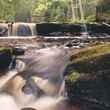
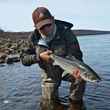
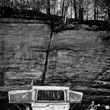



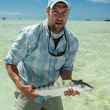



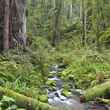
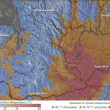



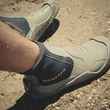
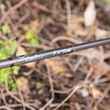



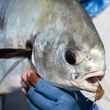


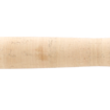

Comments
FireGirl_Jess replied on Permalink
All about those soft hackles. Nice write-up, Tom.
Pages